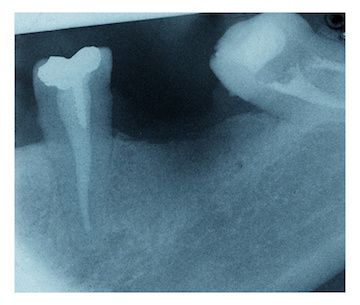Researchers Use Tooth Germ to Regenerate Teeth in Animal Study
Researchers harvested tooth germ cells and tissues from a dog, then reconstructed them. This reconstructed material was then transplanted into mice. After several weeks, tooth-crown formation had taken place in many of the mice. The transplant resulted in hard- and soft-tissue formation.

Researchers hope that the same procedure will regenerate teeth in humans.
A new study released in the journal Scientific Reports highlights autologous transplantation of bioengineered tooth germ to successfully regenerate a tooth. The study involved the use of a canine subject, but researchers hope the results could eventually lead to the restoration of natural teeth in humans following disease or injury.
RELATED: More Dental Implant News
· New Nanocoatings Could Help Prevent Peri-Implantitis
· VITA Debuts New Shade Scanner for Dental Wings
· New Implant Manufacturing Platform Drives Shift to Digital
Currently, treatments for tooth restoration involve replacing the tooth with artificial materials or an osseointegrated dental implant. To begin to develop an alternative to this method, a research team from Okayama University first examined whether bioengineered tooth germ could lead to the formation of a proper tooth.
Embryonic tooth germ cells and tissues from a canine were harvested and then reconstructed. The reconstructed material was transplanted into mice, where, in many cases, the germ resulted in tooth-crown formation after several weeks. The transplanted germ produced both the soft and hard tissues that are present in natural teeth.
With the promising results of the initial study, the researchers next moved on to test autologous transplantation using canine stem cells. Deciduous teeth were extracted from a 30-day old dog, allowing for the generation of tooth germ from the dog’s own tooth cells. After two days of cell culture, the tooth germ was implanted back into the dog’s mandible, resulting in tooth eruption 180 days later.
Interestingly, micro-CT analysis of the new tooth showed its formation was almost identical to that of a natural tooth. Further testing revealed the structure and chemical composition matched that of natural teeth. Finally, subjecting the regenerated tooth to mechanical force resulted in a response consistent with proper physiological functioning of the periodontal ligament.
In humans, immature wisdom teeth could become a source of stem-cell germs, but this would only pertain to individuals seven years old or younger. For older patients, another stem-cell source would first need to be identified. Regardless, researcher Takuo Kuboki and colleagues made a statement expressing hope for future tooth regeneration, saying, “This study highlights the feasibility of fully functional tooth restoration by autologous transplantation of bioengineered tooth germ."